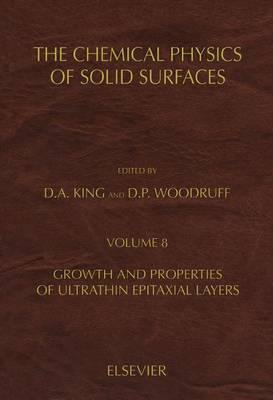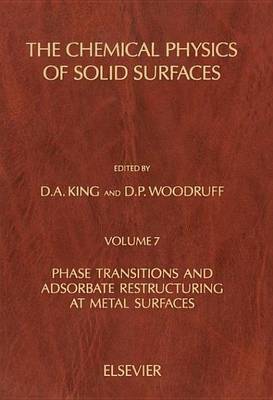Chemical Physics of Solid Surfaces
2 total works
Growth and Properties of Ultrathin Epitaxial Layers
by D A King, Author Unknown, and Unknown Author
Published 18 June 1997
Phase Transitions and Adsorbate Restructuring at Metal Surface
by D A King and D. P. Woodruff
Published 5 July 1994
The objective in initiating this series in 1980 was to provide an in-depth review of advances made in the understanding key aspects of surface chemistry and physics through the application of new techniques to the study of well-defined surfaces. Since then the field of surface science has greatly matured, and further important techniques, particularly scanning probe microscopies, have been successfully assimilated into the applications armoury of the surface scientist.
The present volume is a series of timely reviews by many of the current experts in the field of phase transitions and adsorbate-induced surface restructuring. No aspect of the science of solid surfaces can be fully understood without accounting for the structural diversity of surfaces, now revealed in atomic detail by techniques based on diffraction and scanning probe microscopies. For example, it is now clear to those working in heterogeneous catalysis that adsorbate-induced restructuring of surfaces can play a critical role in phenomena such as bistability, kinetic oscillations, and promotion and poisoning. Structural transitions at surfaces can also play a key role in determining the electronic properties of surfaces, reviewed in volume 5.
The present volume is a series of timely reviews by many of the current experts in the field of phase transitions and adsorbate-induced surface restructuring. No aspect of the science of solid surfaces can be fully understood without accounting for the structural diversity of surfaces, now revealed in atomic detail by techniques based on diffraction and scanning probe microscopies. For example, it is now clear to those working in heterogeneous catalysis that adsorbate-induced restructuring of surfaces can play a critical role in phenomena such as bistability, kinetic oscillations, and promotion and poisoning. Structural transitions at surfaces can also play a key role in determining the electronic properties of surfaces, reviewed in volume 5.

